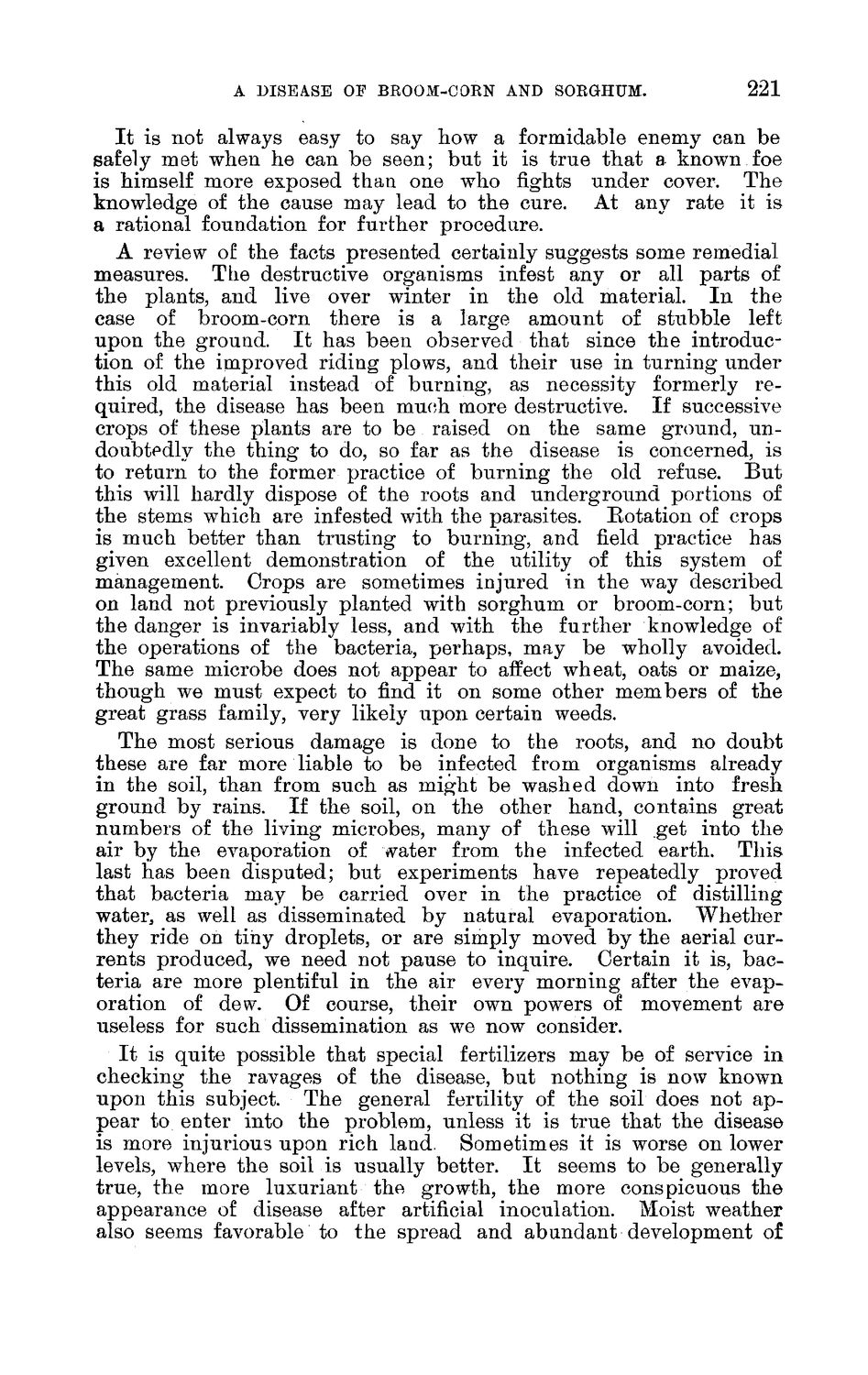| |
| |
Caption: Board of Trustees Minutes - 1888
This is a reduced-resolution page image for fast online browsing.

EXTRACTED TEXT FROM PAGE:
A DISEASE OF BROOM-CORN AND SORGHUM. 221 I t is not always easy to say how a formidable enemy can be safely met when he can be seen; but it is true that a known foe is himself more exposed than one who fights under cover. The knowledge of the cause may lead to the cure. At any rate it is a rational foundation for further procedure. A review of the facts presented certainly suggests some remedial measures. The destructive organisms infest any or all parts of the plants, and live over winter in the old material. I n the case of broom-corn there is a large amount of stubble left upon the ground. It has been observed that since the introduction of the improved riding plows, and their use in turning under this old material instead of burning, as necessity formerly required, the disease has been much more destructive. If successive crops of these plants are to be raised on the same ground, undoubtedly the thing to do, so far as the disease is concerned, is to return to the former practice of burning the old refuse. But this will hardly dispose of the roots and underground portions of the stems which are infested with the parasites. Rotation of crops is much better than trusting to burning, and field practice has given excellent demonstration of the utility of this system of management. Crops are sometimes injured in the way described on land not previously planted with sorghum or broom-corn; but the danger is invariably less, and with the further knowledge of the operations of the bacteria, perhaps, may be wholly avoided. The same microbe does not appear to affect wheat, oats or maize, though we must expect to find it on some other members of the great grass family, very likely upon certain weeds. The most serious damage is done to the roots, and no doubt these are far more liable to be infected from organisms already in the soil, than from such as might be washed down into fresh ground by rains. If the soil, on the other hand, contains great numbers of the living microbes, many of these will get into the air by the evaporation of water from the infected earth. This last has been disputed; but experiments have repeatedly proved that bacteria may be carried over in the practice of distilling water, as well as disseminated by natural evaporation. Whether they ride on tiny droplets, or are simply moved by the aerial currents produced, we need not pause to inquire. Certain it is, bacteria are more plentiful in the air every morning after the evaporation of dew. Of course, their own powers of movement are useless for such dissemination as we now consider. I t is quite possible that special fertilizers may be of service in checking the ravages of the disease, but nothing is now known upon this subject. The general fertility of the soil does not appear to enter into the problem, unless it is true that the disease is more injurious upon rich land. Sometimes it is worse on lower levels, where the soil is usually better. I t seems to be generally true, the more luxuriant the growth, the more conspicuous the appearance of disease after artificial inoculation. Moist weather also seems favorable to the spread and abundant development of
| |